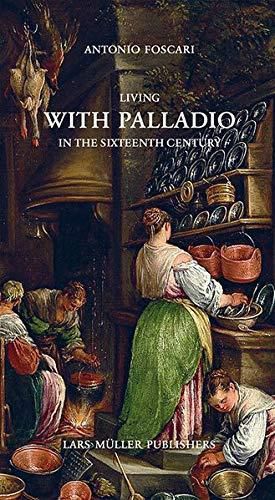Readings Newsletter
Become a Readings Member to make your shopping experience even easier.
Sign in or sign up for free!
You’re not far away from qualifying for FREE standard shipping within Australia
You’ve qualified for FREE standard shipping within Australia
The cart is loading…






Hierarchies of the household: how Palladio composed his iconic villas for collective living. Visiting the villas built by Andrea Palladio (1508 1580), one inevitably asks oneself how people lived there in the sixteenth century. Palladio articulated the villas as small towns (piccole citta) that formed a unit with adjacent service buildings and farm fields. Within their walls lived a multitude of people of all ages, social backgrounds and various skills. They were the venue for significant moments of public life. In these houses, the principles of hygiene, privacy and comfort, which we consider essential today, did not apply; furniture as such did not exist. Living with Palladio in the Sixteenth Century investigates how Palladio’s houses, their floors, rooms and measurements are designed to structure the life of such a heterogeneous family of people. It analyses their hierarchical structure with the owner (padrone) at the top and everyone involved in the everyday running of the household (famiglia minuta) at the bottom. This book fills a decisive gap in research literature on the famous Italian architect by looking at how Palladio prioritised the domestic functions of his private buildings. AUTHOR: Antonio Foscari is an architect and has been a professor of architecture at the University of Venice since 1971. In 1973, he restored the Villa Malcontenta, built for his ancestors by Andrea Palladio, and has concentrated his research on buildings by the great Renaissance architect since that date. 71 illustrations
$9.00 standard shipping within Australia
FREE standard shipping within Australia for orders over $100.00
Express & International shipping calculated at checkout
Hierarchies of the household: how Palladio composed his iconic villas for collective living. Visiting the villas built by Andrea Palladio (1508 1580), one inevitably asks oneself how people lived there in the sixteenth century. Palladio articulated the villas as small towns (piccole citta) that formed a unit with adjacent service buildings and farm fields. Within their walls lived a multitude of people of all ages, social backgrounds and various skills. They were the venue for significant moments of public life. In these houses, the principles of hygiene, privacy and comfort, which we consider essential today, did not apply; furniture as such did not exist. Living with Palladio in the Sixteenth Century investigates how Palladio’s houses, their floors, rooms and measurements are designed to structure the life of such a heterogeneous family of people. It analyses their hierarchical structure with the owner (padrone) at the top and everyone involved in the everyday running of the household (famiglia minuta) at the bottom. This book fills a decisive gap in research literature on the famous Italian architect by looking at how Palladio prioritised the domestic functions of his private buildings. AUTHOR: Antonio Foscari is an architect and has been a professor of architecture at the University of Venice since 1971. In 1973, he restored the Villa Malcontenta, built for his ancestors by Andrea Palladio, and has concentrated his research on buildings by the great Renaissance architect since that date. 71 illustrations